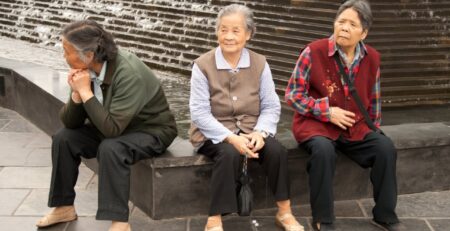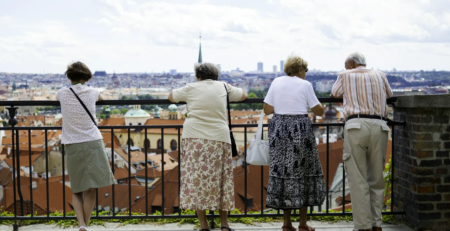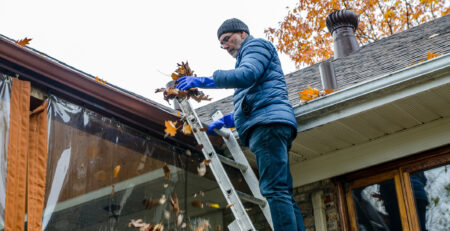China wants to build a ‘silver economy’ for its ageing society – but who will keep it running?
Homes for the elderly are businesses like any other. But when Yan Guizhen established her first care facility at the turn of the millennium, she was more interested in providing a necessary service than maximising profit.
Yan, 53, now manages six facilities that employ around 100 carers, tending to more than one thousand beds in China’s eastern Shandong province. But her dream to keep those of the older generation safe and comfortable has run into several snags.
“People are reluctant to take this job,” she said, attributing the understaffing to the industry’s low social status, training and income.
On average, each carer looks after three to six individuals at Yan’s homes, but there have been instances where one has to attend to up to 10 at once.
Care for the elderly, along with pension and medical services, are the major issues related to this age group that are leaving Beijing’s decision-makers flummoxed.
The dilemma has prompted a campaign to develop a “silver economy” – building or tweaking industries to serve the needs of the aged – and solve the country’s worrying unemployment numbers, particularly among youth.
Analysts said concerns over staff shortages are shared by most senior care institutions in China, as most personnel are middle-aged or elderly women from rural areas with a junior high school education or below.
The demand for carers in China has exceeded 6 million, but an April article from the official Xinhua news agency estimated the present workforce numbers a little over 500,000.
More senior citizens are now resorting to outside institutions to be looked after in their old age. According to official data, as of the end of 2022, there were a total of 387,000 facilities nationwide with 8.29 million beds under their operational umbrella.
But keeping the people in those beds comfortable and happy requires staff – and there is a scarcity of young, qualified carers, said Yang Fan, an associate professor of social policy at Shanghai Jiao Tong University.
In Yan’s nursing homes, carers generally fall between the ages of 40 and 60, 67 being the oldest. There are no strict qualifications or thresholds for hiring.
“As long as they do not have an infectious disease and are willing to work, we can gradually train them,” she said.
However, younger women tend to choose better-paying jobs, such as nannies or factory workers – mirroring trends seen in their opposite number.
“It is a gender-specific phenomenon, but with similar characteristics,” Yang said. “Where older female migrant workers gather in urban nursing homes, men gather at construction sites in cities. Younger people tend to avoid these two industries.”
To encourage more inflows, in 2019 the ministries of human resources and civil affairs abolished an entry requirement for senior carers, no longer mandating they hold a junior high school education or higher.
This incentivised more people to join the workforce while leaving the skills and training question unresolved. Yang warned of a potential mismatch between aspirations for a better quality of life in old age and the capabilities of carers.
Taking Shanghai as an example, he said, the government is promoting smart nursing homes which include digital facilities and care plans tailored for the elderly and disabled, allowing them to enjoy high-quality services.
But when it comes to training and implementation, considering the educational background and learning capacity of many carers, there’s a significant gap between ideals and reality, Yang said.
“They lack skills and education, finding themselves relatively disconnected from society,” said Yan, the nursing home owner. “Modern technologies like electronic payments and scanning QR codes for entry are unfamiliar to them. And they have limited options in the labour market.”
While these labour force issues are often seen as a weakness hampering the development of China’s senior care industry, workers’ demands are also being overlooked, said Wu Xinyue, a postdoctoral fellow at Southeast University’s School of Humanities.
Unlike urban dwellers, who tend to have stable jobs allowing them to accumulate seniority, their career paths are highly fragmented. This deprives them of the opportunity to accumulate skills or qualifications, said Wu, who conducted field research on senior care labour from 2016 to 2018 in east China’s Jiangsu province.
As part of China’s first generation of rural migrant workers, many took jobs on assembly lines when local enterprises emerged in the 1980s. As they grew older and unable to carry out hard physical labour, they shifted to lower-end service industries and eventually entered the field of caregiving.
Compared to specialised childcare, which also comes with a much higher salary, the lack of societal recognition of the economic value of aged care has resulted in those caring for the elderly being the oldest on average and occupying the lowest rung on the professional ladder within the caregiving industry, she added.
Home and community-based senior care services have been the focus of development in recent years. As of the third quarter of last year, there were 359,000 community elderly care institutions and facilities nationwide with 3.09 million beds.
According to the 2021-2025 development plan, the total number of elderly care service beds is expected to exceed 9 million by 2025. With the rapid expansion of demand for disabled and semi-disabled individuals, the plan set out a goal to increase the proportion of nursing care beds to 55 per cent of the total.
The government has also invested heavily in educating and placing senior care staff; it covers tuition fees, provides living allowances during the study period, guarantees employment and distributes post-employment allowances.
Yang of Jiao Tong University said one persistent problem lies in the retention rate.
“The proportion of people staying in this industry is still very low,” he said, citing an example of a class in a vocational college in Shanghai.
Of the 40 students in the class, after graduation only 20 to 30 per cent went into care work. And after one year of work, only a few students remained in the field.
Even among those who stay, there is a great deal of movement. Many switch to high-end institutions, or in cities like Shanghai, transition to insurance projects in long-term care, which offer higher incomes and more flexibility. Few professional carers would choose to stay and work indefinitely in regular institutions, he said.
The shortage of elderly care workers is a global issue, Yang said. “Job subsidies can provide temporary relief, but [won’t] fundamentally resolve the problem.”
Other countries and regions have attempted to ease their shortages with the introduction of immigrants, but that has not been applied in China, he said.
In the meantime, prizes for exemplary performance like the Elderly Caregiver Skills Competition can be good early platforms to enhance social recognition of the profession, Yang added.
The eastern province of Jiangsu rolled out the country’s first professional title system for elderly caregiving in September. Specific criteria regarding work experience and qualifications were set up for eligible personnel to apply for junior, intermediate and senior professional titles.
Initiatives like this, designed to lay out a clear pathway for career advancement, can help turn senior care into a recognised and respected occupation, rather than merely an option for surplus labour in rural areas or a temporary transitional job, Yang said.
Last month, Beijing introduced the first national comprehensive document on the elderly care workforce. It laid out a pilot programme to improve the labour force and detailed mechanisms of social recognition for occupational skills.
“Beyond the existing five [skill] levels,” said Li Yongxin, deputy director of the elderly care services department at the Ministry of Civil Affairs, “creating a new eight-level sequence … further [expands] career development opportunities for elderly care workers.”
Compounding the issue is the fact the already small pool of carers is ageing fast, prompting greater urgency for the government to take action.
As of 2021, the average basic pension for urban and rural residents nationwide was 179 yuan (US$25) per month, while the monthly standard in Shanghai was 1,200 yuan.
“The elderly individuals they care for represent the kind of ageing that they themselves fear the most,” said Wu of Southeast University. “The seniors they care for may show them the harshest side of old age.”
While Beijing has been heightening its push to proliferate high-quality care products and services, “a top-down government design … may not necessarily meet the actual needs of both carers and the elderly, nor adapt to local and diverse caregiving contexts in different communities,” she said.
Some of these new models of care may be hard to qualify with the existing standards for professional and high-quality services, Wu said.
But, she added, “it might be worth considering what kind of professionalisation we truly need beyond standardised and singular imaginations.”
Read more @scmp











